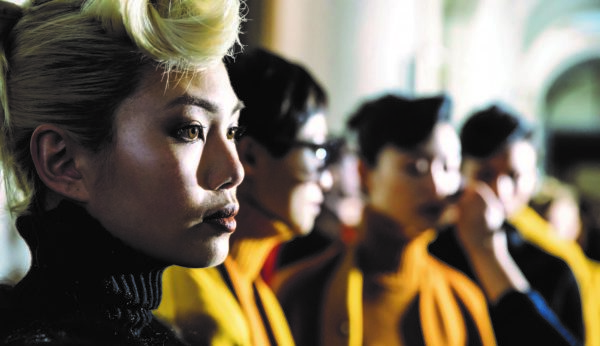A behind-the-scenes view of the “Models' Charter”
Three Fashion Weeks have been held since the Charter on the Working Relations with Fashion Models and their Well-being was adopted in early September 2017. What has changed for models? We follow Anna, an imaginary model, as she prepares for and takes part in the Paris Fashion Week.

One week before: casting
– A fashion house spots 18-year old Anna on her Instagram account. Before she can work as a model, she has to sign a contract with a Paris modelling agency, whose role will be to represent her.
– After signing with the agency, Anna heads over to the fashion house that is thinking about using her and meets with the artistic director and casting director. The interview is a way to check, among other things, that Anna’s measurements match the charter’s health and care criteria. French size 32 (US size zero, UK size 4) models are no longer allowed: since the Charter came into effect, female models must be at least a size 34, while men have to be at least a size 44. Anna gets to use a private space reserved for models, and food is laid on for her, including hot drinks, fruit juice, yoghurt, raw veggies, cereals, fresh and dried fruit and nuts. Dietary recommendations for bodily nutrition and sustenance are posted on the wall. She also gets a copy of the Charter, which includes the phone number to call in the event of a dispute with the agency, the casting director or a fashion house employee, as well as the number of a dedicated psychologist/therapist.
– The agency has a doctor examine Anna to check her health and provide a note to certify that she is healthy and fit to work as a model. While under French law the medical certificate has to be less than two years old, the Charter goes a step further, requiring agencies to provide certificates issued in the last six months.
Three days before: fitting
– Anna is chosen at the casting. Now she takes part in a fitting session at the fashion house. Anna gets changed in a dedicated space, away from prying eyes. Male and female models have access to separate, specially equipped changing rooms. The fashion house’s staff makes sure that the temperature in the fitting area is appropriate to safeguard the comfort and well-being of models.
– The fashion house asks Anna if she will try on an outfit that includes some see-through components. Because this is a situation involving semi-nudity, Anna must give her explicit consent.
– As sometimes happens, the fitting ends in the evening. Anna leaves the building at 9pm in a taxi ordered by the fashion house. To ensure that she gets the statutory 11 hours of consecutive rest, she cannot start working again until 8am the next morning.
– Anna leaves with good news: the fashion house has told her agency that she has been confirmed for the show!
Day before: rehearsal
– A dress rehearsal is organized on the day before the show. When she arrives, Anna meets the fashion house staff who were there at the fitting.
– During the rehearsal, appropriate food and drinks are made available to Anna and the other models. Everything is done to ensure that the models stay fit and healthy.
Show day
– The big day is here! Anna has to be at the venue four hours before the start of the show. She wears a bathrobe as she waits between hair and makeup sessions and outfit changes.
– That’s a wrap! The show is a success, and Anna is delighted. The models and members of the studio gather around the food and drinks backstage, where strong alcohol is banned. For Anna, this might just be the start of a new career.
Photo credit : ©Bottega Veneta
